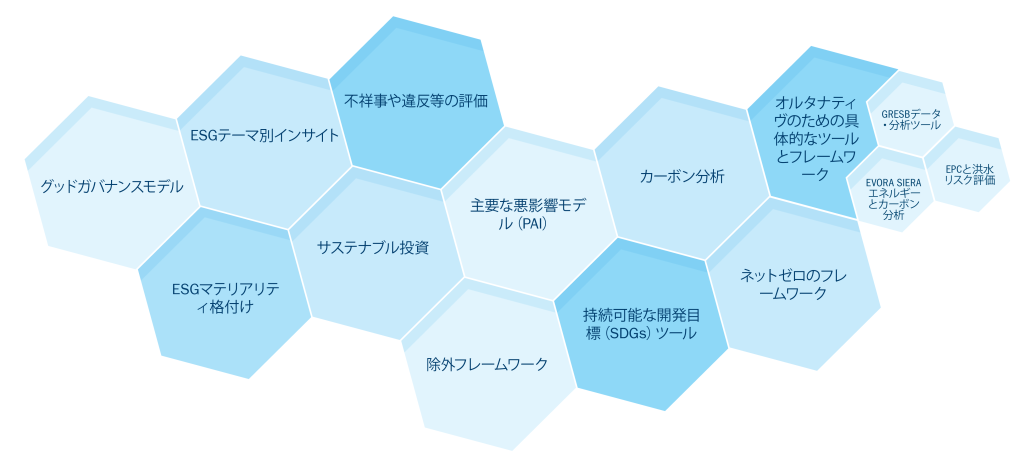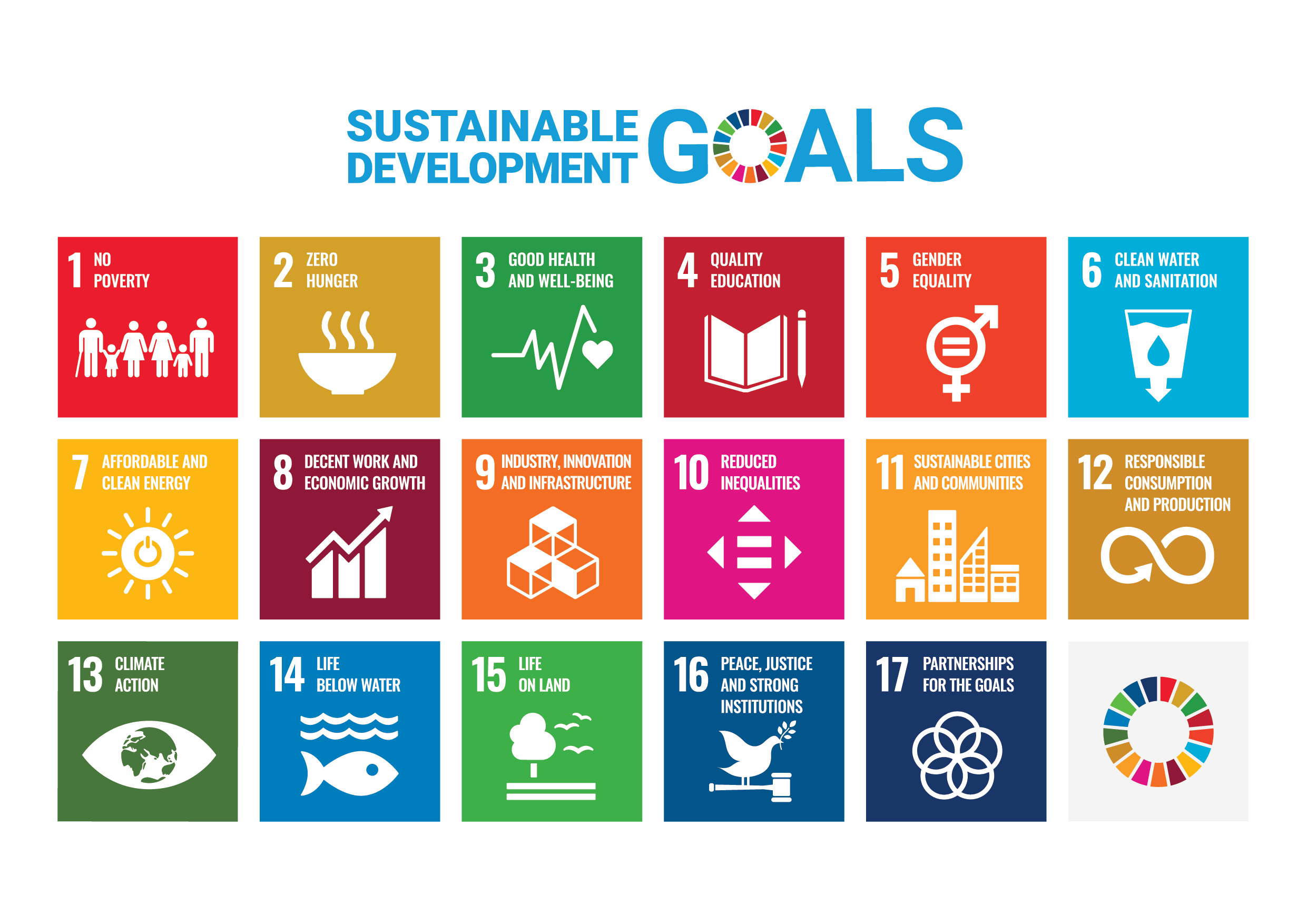会社情報
責任投資
当社は、責任ある投資は基本中の基本であると考えます。そのため、当社は、環境・社会・ガバナンス(ESG)への配慮を、投資リサーチとスチュワードシップの基本的アプローチに統合することを目指しています。
責任投資に関するリサーチは、すべてのポートフォリオマネジャーが利用可能です。チームによっては、投資判断においてESG要素をより重視することもあれば、あまりまたは重視しないこともあります。
パワフルな機能

アクティブオーナーシップ

プロダクトソリューション

マーケットを形成

45+
ESGスペシャリスト
当社の責任投資エキスパートは、ESGに重点をおいたリサーチ、エンゲージメント、議決権行使、データ、報告、商品開発、ESG専門ポートフォリオのスクリーニングにより、当社の顧客、投資専門家、その他広範なビジネスをサポートします。
250+
リサーチアナリスト
ポートフォリオマネージャー、リサーチアナリスト、ESGアナリストは、責任投資チームとの重要なリンクを提供し、アセットクラスに特化したリサーチとエンゲージメントを提供します。これにより、財務上重要なESG課題を意思決定に組み込むことができます。
40年におよび
責任投資経験
当社は40年以上にわたり、その前身となる会社を通じて、責任投資の最前線で活躍してきました。当社の責任投資における伝統は、1984年にローンチした欧州初の社会的・環境的スクリーニングファンドにまで遡ります。2000年にreo®サービスを通じて気候変動問題への取り組みを開始し、2006年には国連責任投資原則の創設メンバーとして署名を行いました。
グローバルなセンタ・オブ・エクセレンス
当社は、責任投資専門家チームを中心に、ESGに関する豊富な専門知識を社内で提供しています。
当社はパワフルな組み合わせにより、投資プラットフォーム全体から最高のインサイトを引き出し、お客様のニーズにお応えいたします。
幅広いセクターおよび業界
当社の責任投資スペシャリストは、幅広いセクターとテーマに関する専門知識を有しており、幅広い投資機会の開発とサポートに役立てています。

調査ツールとフレームワーク
当社は、責任投資エンジンの中核をなす、広範で強力なリサーチツールとフレームワークを擁しています。これらは、投資調査、ポートフォリオ構築、リスク監視へのESG統合に関する情報を提供します。

これらのツールをどの程度利用するかは、クライアントのマンデートと戦略の目的によって異なります。
プロアクティブエンゲージメントと議決権行使を活用して、投資家価値を最大化
当社の大規模なアクティブオーナーシップチームは、業界、セクター、責任投資テーマにわたる幅広い経験と専門知識を有しています。リサーチアナリストやポートフォリオマネージャーとの緊密な協力により、主要な問題を調査し、組織の各レベルの意思決定者を巻き込み、ESG要因、リスク、機会がどのように管理されているかを理解します。
信頼構築に注力
当社の主要なエンゲージメントアプローチは、建設的で機密性の高い対話を行うことであり、通常は主要な意思決定者と独自に対話を行います。長期的な投資家として、当社は、信頼の上に築かれた関係を大切にしています。
また、他の投資家、非政府組織(NGO)、業界団体と協力することがお客様の長期的な経済的利益につながると判断される場合は、そのような協力も行います。
議決権行使を通じてポジティブな変化を生み出す
当社は、議決権行使を利用して、主要なESGテーマに関する発行体による進捗と改善を促進し、優れたコーポレートガバナンスとリスク軽減の実践を促進しており、お客様の利益を代表し、発行体に当社の懸念や意向を聞いてもらうだけでなく、それに基づいて適切に行動してもらうための効果的なツールであると考えています。
効果的な成果に向けて推進
当社は、投資家の価値を実証するために、明確で実行可能なエンゲージメント目標を設定しています。
当社のアクティブオーナシップは、ESGリスクと機会を幅広く網羅し、セクターや地域を問わず発行体を網羅しています。
当社は、国連の17の持続可能な開発目標およびその基礎となるターゲットに沿った、7つのハイレベルなテーマを中心にエンゲージメントを構成しています。

責任投資の戦略
世界中の個人、機関、企業は、財務目標を達成し、同時に価値観と一致する方法で資金を管理することを当社に期待しています。しかし、最適な責任投資戦略は、当然ながら各個人によって異なります。
当社は40年以上にわたり、革新的で幅広い責任投資戦略をお客様に提供する能力を実証してきました。
当社は、マルチアセットやオルタナティブを含むすべての主要資産クラスにおいて、幅広いプール型ESGファンドを提供しています。当社は、どのような責任投資やマンデートに重点を置いているかにかかわらず、お客様独自の興味に合ったソリューションを構築することができます。
(reo®) – 当社の レスポンシブル・エンゲージメント・オーバーレイサービス
当社は、2000年にレスポンシブル・エンゲージメント・オーバーレイ (reo®) サービスをローンチし、アクティブオーナーシップのパイオニアとなりました。 reo® では、お客様は当社のスチュワードシップに関する以下の専門知識一式を利用することができます。
当社のエンゲージメントのインパクトを詳しく説明したSDGsに沿った報告書
あらゆる時価総額を網羅したグローバルなクロスセクターカバレッジ
20名以上のアクティブオーナーシップスペシャリスト
23年間のエンゲージメント実績
reo® サービスは、管轄地域によってはご利用いただけません。
グローバルなスチュワードシップと説明責任の受け入れ
当社は、グローバルな大規模資産運用会社として、金融システムが十分に機能するよう支援する責任を真摯に受け止めています。長い目で見れば、これはお客様と社会全体の利益となります。当社は責任ある雇用主であり、事業を展開する地域社会に積極的に貢献するよう努めています。責任を持つことは、当社の企業文化のベースであります。
大きな話題の一部となる
当社は、主要な問題について規制当局や政策立案者と連携することで、公共政策の策定において思慮深く積極的な役割を果たし、建設的な投資家の声の基準となるよう努めています。当社は、新たなESG問題をよりよく理解し、より広い業界と学びを共有するために、各種業界のワーキンググループを通じて、他の投資家と協力しています。
目的を持って行動する
当社は長年にわたり、確立された責任投資基準や規範に署名しており、事業における多様性・公平性・インクルージョンの向上に努めています。当社はまた、事業が気候に与える影響を慎重に考慮し、慈善事業への寄付や支援を通じて慈善活動に参加しています。当社の企業コミットメント:
- 英国、台湾、日本のスチュワードシップコードに署名
- 国連の責任投資原則の創設署名者
- ネットゼロ・アセットマネジャーズ・イニシアチブに署名
- Climate Action 100+のメンバー
人権のための投資家アライアンスのメンバー
- スチュワードシップとコーポレートガバナンスのグッドプラクティスを推進する投資家と資産運用会社で構成される米国投資家スチュワードシップグループに署名
- 英国の金融における女性憲章(Women in Finance Charter)の創設署名者
Policies
Disclosures
A
Adverse impact
Aggregate sustainability risk exposure
The overall sustainability risk faced by a company or portfolio, taking account of a range of issues such as climate risk and ESG factors.
B
Best-in-class
Best-in-class strategies try to make their portfolios better on ESG issues and/or carbon characteristics by excluding certain investments deemed negative in that respect or including certain investments deemed positive in that respect.
C
Carbon footprint
The carbon emissions and carbon intensity of a portfolio, compared with its investment universe (benchmark). The benchmark might be, for example, companies in the FTSE 100.
Carbon intensity
A company’s carbon emissions, relative to the size of the business. This allows investors to compare the company’s carbon efficiency with its competitors’.
Climate risk
The risk that an investment’s value could be harmed by climate issues such as global warming, energy transition and climate regulation. Investors normally assess climate risk by looking at carbon footprint data, climate adaptation risk, physical risk and stranded assets.
Climate adaptation risk
See Transition Risk.
Controversies
A company’s operational failures or everyday practices that have severe consequences for workers, customers, shareholders, wider society and the environment. Examples are poor employee relations, human rights abuses, failure to follow regulations, and pollution. Controversies help to indicate the quality of a company.
Corporate governance
The way that companies are organised and led. We look at how well companies are sticking to good practices set out in Corporate Governance Codes, which vary from country to country. Corporate governance is also part of the ‘G’ in ESG. In this context Governance may focus on the operational and management practices relating to social and environment aspects of the business.
Corporate Social Responsibility (CSR)
A company’s approach to (and engagement with) its stakeholders and the communities it operates in, reflecting its responsibility towards people and planet.
D
Decarbonisation
The reduction of the carbon emissions associated with a region, country, industry or organisation. It can also refer to the reduction of the carbon emissions associated with a fund’s investments.
Divestment
The opposite of investment. In other words, either reducing or exiting an investment. We divest if we think the potential risks of investing in a company outweigh the potential returns. This may be because we have lost confidence in a company’s leadership, strategy, practices or prospects .
E
Engagement
Talking to members of the board or management of a company – a two-way process that we might initiate, or the company might initiate. We use engagement to understand companies better. We also use it to give feedback, offer advice and seek changes – including change relating to ESG and climate risk. Engagement also means consulting with government and collaborating with other investors to influence policy and shape debate.
Environmental
The “E” in ESG. This covers a focus on significant environmental risks and their management. In a climate change context it is a focus on the risks associated with a business having to adapt to climate change requirements or the physical impacts of climate change. We also look at companies’ environmental opportunities due to changing consumer demands, policy changes, technology and innovation.
ESG
Short for environmental, social and governance. Investors consider companies’ ESG risks and how well they are managed. To do this, we use the Sustainability Accounting Standards Board (SASB) framework. Considering ESG gives us a different perspective on how good an investment might be.
ESG integration
Always taking account of ESG issues when assessing potential investment opportunities and monitoring the investments in a portfolio.
ESG ratings
Many investment managers use external providers, such as MSCI, to rate companies on their ESG practices. Each provider has its own way of doing things, so ESG scores can vary radically from one provider to another. We run our own ESG system to rate companies. This is based on 77 standards, each for a different industry, produced by the Sustainability Accounting Standards Board.
Ethical investing
An ethical approach excludes investments that conflict with the client values and ethics that a fund is seeking to reflect. There are many different activities or issues that people prioritise as ethical. Common examples include tobacco, adult entertainment, controversial weapons, coal or activities that contravene religious social teaching.
Exclusion
Excluding companies from a portfolio. Exclusions can also be used to set minimum standards or characteristics for inclusion of investments in portfolios. Fund managers may exclude entire industries (e.g. tobacco), companies involved in ethically questionable activities (e.g. gambling), companies that fail to meet certain ESG standards, and companies with a bad carbon intensity.
F
Fundamental analysis/research
Using research to work out the true value of an investment, rather than its current price. Many factors contribute to this, including responsible investment factors. Responsible investment helps us understand the quality of a company, its scope to develop and improve (e.g. in response to climate transition) and its prospects (through making money from responding to sustainability issues). Even if a company is good, it is unlikely to offer good investment returns if this is already reflected in the share price.
G
Green bonds
Debt issued by companies or governments, with the money raised earmarked for green initiatives such as building renewable energy facilities.
Greenwashing
Insincere approaches to climate change and other ESG issues by companies, including investment management firms. For example, an investment manager may label a fund as an ESG fund, even if it does not adopt ESG integration in practice.
I
Impact investing
International Labour Organisation (ILO)
A United Nations agency, often abbreviated to “ILO”, that sets international standards for fairness and safety at work. The ILO standards are commonly used by investors to assess how serious a corporate controversy is.
M
Materiality
An ESG issue is “material” if it is likely to have a significant positive or negative effect on a company’s value or performance.
N
Norms-based screening
Screening investments for potential controversies by looking at whether a company follows recognised international standards. We consider standards including the International Labour Organisation standards, the UN Guiding Principles for Business and Human Rights and the UN Global Compact. Specialist RI funds may exclude companies that do not meet these standards.
P
Physical risk
The physical risks of climate change for businesses, such as rising sea levels, water shortages and changing weather patterns.
Portfolio tilts
Investment industry jargon for having more of something in a portfolio than the benchmark, or less of it. In responsible investment it usually means having more companies in a portfolio that have better ESG credentials or are less exposed to climate risk than there is in the benchmark. The tilt is measured as the overall exposure to a specific type of investment in a portfolio compared to that in the benchmark.
Positive inclusion/screening
Seeking companies that have good ESG practices or that help the world economy be more sustainable. Also used as an alternative to “best-in-class“. The opposite of exclusion.
Principles for Responsible Investment
Often shortened to PRI. A voluntary set of six ethical principles that many investment companies have agreed to adopt. Principle 1, for example, is: “We will incorporate ESG issues into investment analysis and decision-making processes.” The PRI was sponsored by the United Nations. Columbia Threadneedle is a founding signatory, and has attained the top A+ headline rating for its overall approach for the sixth year running.
Proxy voting
Voting on behalf of our clients at company general meetings to show support of their practices and approach – or to show our dissent. We put our voting record on our website within seven days of the vote.
R
Responsible Investment (RI)
The umbrella term for our approach towards managing our clients’ money responsibly. This includes the integration of ESG factors, controversies, sustainability opportunities and climate risks into our investment research and engagements with companies, to inform our investment decisions and proxy voting.
Responsible Investment Ratings
Mathematical models created by our responsible investment analysts that provide an evidence-based and forward-looking indication of the quality of a business and its management of risk.
S
Scope 1, 2 and 3 emissions
The building blocks used to measure the carbon emissions and carbon intensity of a company. Under an international framework called the Greenhouse Gas Protocol these are divided into Scope 1, 2 and 3 emissions. Scope 1 emissions are generated directly by the business (e.g. its facilities and vehicles). Scope 2 covers emissions caused by something a company uses (e.g. electricity). Scope 3 is the least reliable because it is the hardest to measure. It covers other indirect emissions generated by the products it produces (e.g. from people driving the cars a company makes).
Screened funds
Funds that use screens to exclude companies that do not meet their ethical criteria, ESG expectations, carbon intensity or controversy standards.
Social
The “S” in ESG. Investors analyse social risks and how these are managed. This includes a company’s treatment of its employees and its human rights record for other people outside the company (e.g. in the supply chain). It also refers to a company’s commercial opportunities in responding to changing consumer demands, policy changes or technology and innovation (e.g housing, education or healthcare).
Social bonds
Bonds issued to raise money for a socially useful purpose, such as education or affordable housing. Social bonds follow the standards set by the International Capital Market Association (ICMA) and appoint independent external reviewers to confirm the money raised will be used appropriately.
Socially Responsible Investing (SRI)
A form of ethical investment that attaches particular importance to avoiding harm to people or the planet, from the investments being made.
Stewardship
A catch-all term to describe the actions taken to look after our clients’ money. It commonly involves both engagement with companies, to develop a proper understanding of business developments, issues and potential concerns; and proxy voting to support or oppose issues at company general meetings.
Stranded assets
A variety of factors can lead to the risk of assets becoming stranded, such as new regulations or taxes (e.g. carbon taxes or changes in emission trading schemes) or changes in demand (e.g. impacts on fossil fuels, resulting from the shift towards renewable energy). Stranded assets risk having their value written down, impacting the value they have in a company’s accounts.
Sub-advisor
When one investment management company hires another investment management company to manage one of their funds, the hired company is the sub-advisor. Sub-advisors are sometimes used in responsible investment if they have specialist knowledge of this field that does not exist in-house.
Sustainability Accounting Standards Board
Often referred to as “SASB”, this is a non-profit organisation that sets standards for the sustainability information companies should communicate to their investors. It has produced 77 sets of industry-specific global standards. SASB looks for sustainability issues that are financially significant to a particular industry.
Sustainability risk
An environmental, social or governance risk that could hit the value of an investment.
Sustainable Development Goals (SDGs)
A set of 17 policy goals set out by the United Nations, which aim for prosperity for all without harming people and the planet. Each goal has a number of targets. For example, Goal 2 is Zero Hunger and Target 2.3 is to double the productivity and incomes of small-scale food producers. Companies can contribute to the SDGs by making products or services that help achieve at least one of the 17 goals.
Sustainable investing
Investing in a way that recognises the need for and supports balanced social, environmental and economic development for the long term.
T
Task Force on Climate-related Financial Disclosures (TCFD)
The Task Force on Climate-Related Financial Disclosures was set up by the World Bank to help companies communicate their climate risks and opportunities and how they manage them. The TFCD sets out a framework for communicating how management considers climate risks, its strategy for responding to climate change, risk management arrangements and the types of risk covered. The TCFD says companies should, for example, explain how their business strategies would cope in different temperature scenarios. From 2022 companies listed on the UK stock market will have to follow the TCFD’s recommendations for disclosing climate risks.
EU SFDR (Sustainable Finance Disclosure Regulation)
This forces funds to communicate how they integrate sustainability risk and consider adverse impacts. For funds promoting environmental or social characteristics or that are targeting sustainability objectives, additional information will need to be communicated.
The EU Taxonomy
Often called the “Green Taxonomy”. This is the EU’s system for deciding whether an investment is sustainable. Investments must contribute to one or more environmental objectives and meet the detailed criteria required for each activity or product that contributes to this. Investments must not do significant harm to any of the objectives. They must also meet minimum standards in business practices, labour standards, human rights, and governance.
Thematic investing
Researching global trends, or “themes”, to identify investments that will either benefit from changing needs or be impacted by them. Common themes are climate change and technological innovation. Often combined with sustainable investing, which looks at these trends but with an additional focus on the environmental or social implications of themes.
Transition risk
The potential risks faced by companies as society transitions towards alignment with the Paris Agreement to limit global warming. This is the risk that a company is so invested in certain incompatible operations and assets that it is uneconomical to transition to align with the Paris Agreement.
U
UN Global Compact (UNGC)
The world’s largest sustainability initiative. The UNGC sets out a framework based on Ten Principles for business strategies, policies and practices, designed to make businesses behave responsibly and with moral integrity. Companies can volunteer to sign the Compact, and can be struck off by the UN for breaking it. The Compact is commonly used by investors to assess how serious controversies are.
UN Guiding Principles for Business and Human Rights
A framework for companies to prevent human rights abuses caused by their activities. Commonly used by investors to assess the severity of companies’ human rights failures.
On your bike - Shimano and cycling
ESG Viewpoint: Nature Positive commitments: separating the green from greenwash
Human capital – supply: the impact of demographic transition on investments
重要事項:
上記は当社への理解を深めていただくことを目的に、当社グループ(コロンビア・スレッドニードル・インベストメンツ)の責任投資への取組についてご紹介するものです。特定の金融商品等の推奨、取得勧誘を目的とするものではありません。また運用又は助言に関わるサービスについて勧誘を行うものではありません。
掲載された情報は作成日時点のものであり、通知や予告なく変更される場合があります。また、情報は信頼でき、最新であると判断した情報に基づき作成されておりますが、その正確性、有効性又は完全性を保証するものではありません。
コロンビア・スレッドニードル・インベストメンツは、コロンビアとスレッドニードル関連グループ会社のグローバルブランド名称です。